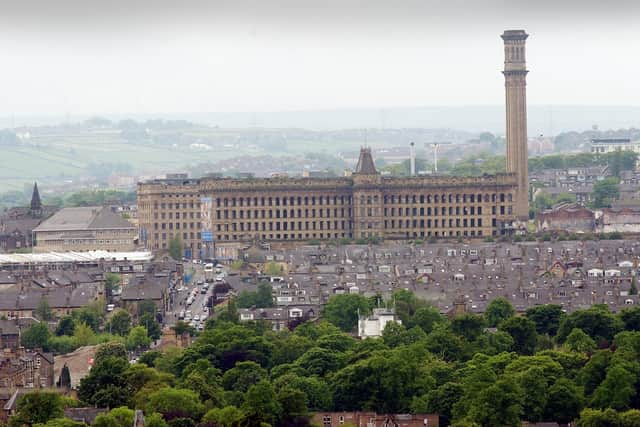Lister Mills: Solar panel plan to 'future-proof' historic Grade II*-listed mill in Yorkshire
Lister Mills, also known as Manningham Mills, was built in 1873 for Samuel Cunliffe Lister – one of the city’s most successful industrialists. The huge site is Grade II* listed, and is one of the largest surviving mills in West Yorkshire, and its imposing chimney is one of Bradford’s most recognisable landmarks.
Sections have been converted into housing, while other parts are used by a gym, industrial business and a theatre company. Now, a planning application to install solar panels to the sawtooth roof of a large section of the mill on Heaton Road has been submitted to Bradford Council.
Advertisement
Hide AdAdvertisement
Hide AdApplicants Haddow Enterprise LTD say the panels will reduce energy bills for existing businesses based at the site, and make the mill more attractive to future tenants.


The application says: “The fenestrations to Scotchman Road, Heaton Road and Beamsley Road show the main historic elements to the building, which in themselves have been adapted over time to allow the mill to remain in use.
“The prominent main multi-storey central section to the building along with the street fenestrations are the remaining historical areas of significance, with the remainder of the mill adapting through time to the needs of the various owners / tenants within.
“It is essential to take into account the need to maintain / retain use / reduce energy usage / be environmentally conscious and energy efficient in a historic building whilst retaining significant elements.
Advertisement
Hide AdAdvertisement
Hide Ad“From a visibility impact point of view, this is considered low due to the height of the sawtooth roof, height of the adjacent surrounding parapet wall and surrounding lower level residential dwellings. “The panels themselves would not stick out in front of the building, and be minimal in their effect on the external appearance of the building.
“The panels are intended to feed directly into the National Grid without a battery storage. During daylight weekday hours this will help offset the usage of the tenants and during the weekend feed straight into the grid when there is lower usage from the site.
“The enhancement and benefits this will give to the mill owners and also the tenants are lower energy costs, less reliance on the grid with fluctuating energy prices, reducing the Mill’s carbon footprint and making the Mill more appealing to businesses due to energy efficient use.”
It also says the work will “future proof” the historic building. A decision on the application is expected next month.